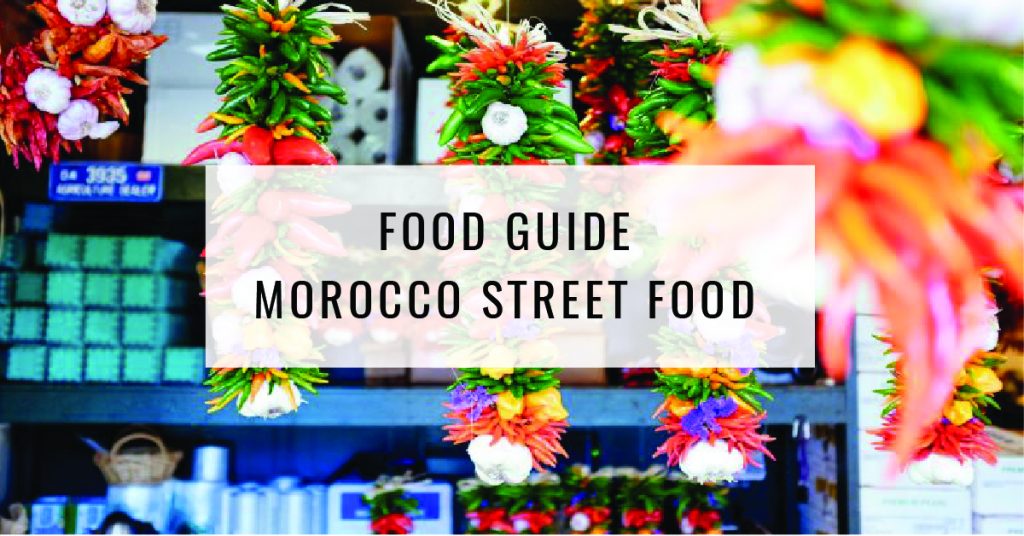
Finding itself located at the crossroads between Europe and Africa, Morocco has developed one of the most sought-after cuisines in the world owing to this immense clash of cultures. Today we’re going to look at ten amazing dishes you’ll want to try out when you’re next travelling around this North African nation.
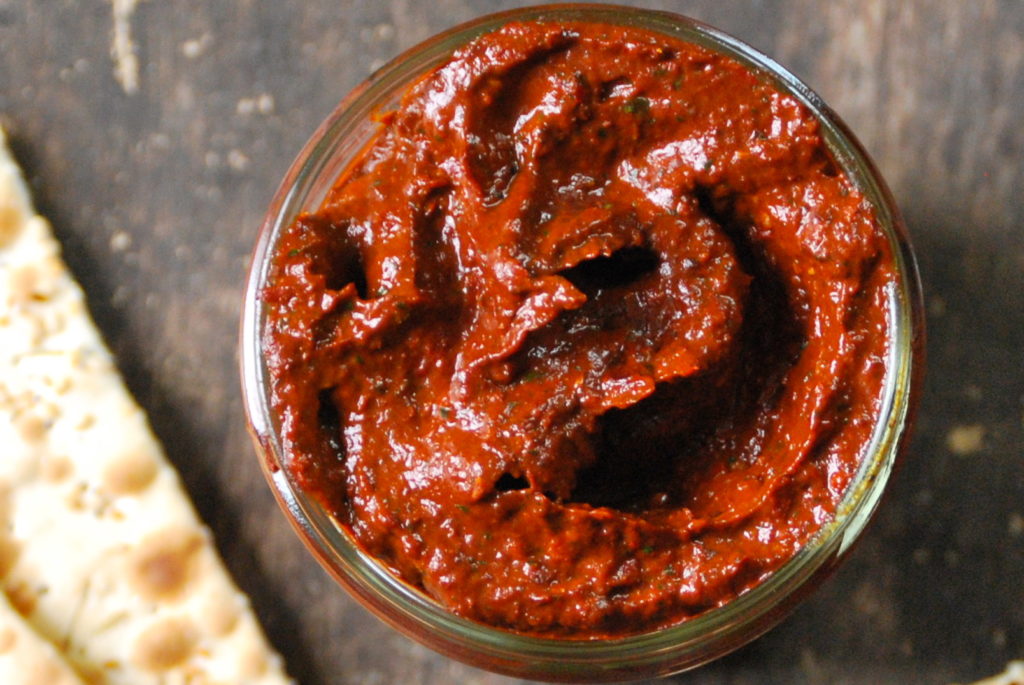
Image courtesy of relishingit.com
Harissa (هريسة)
Harissa is a spicy chilli pepper paste that is commonly used in Moroccan cuisine. Although it is said to originate from neighbouring Tunisia, this paste is used quite profoundly in Moroccan cuisine. The main ingredients of this Maghrebi import consists of roasted red peppers, Baklouti pepper, serrano peppers, garlic, coriander seed, saffron and caraway. Fragrant to the taste, you can see why its use is so widespread.

Image courtesy of NYT Cooking
Chermoula (شرمولة)
Although not as commonly used as harissa, chermoula is another sauce or marinade which is made using a variety of herbs and spices including cumin, paprika and cayenne primarily. The mixture is layered on fish (cod or ling), which is then grilled over hot coals. This process leaves you with brilliantly flavoured meat, which melts in the mouth. Chermoula doubles up as a dipping sauce too, with the marinade able to be served up alongside most meals to add a little extra oomph.

Image courtesy of delicious.com.au
Harira (حريرة)
This soup is served up for breakfast most mornings during the holy month of Ramadhan – which should speak volumes about how hearty it is. This religious practice sees Muslims fasting during daylight hours, with Harira serving to fill them up for the full day after they wake. The meal is incredibly rich, with tomatoes, lentils, chickpeas and lamb combined together with a squeeze of lemon juice. This dish is also notably served because of its nutritious value, which aids the fasting period of Ramadhan. As this dish is quite a homely dish, there are as many variations as there are Moroccan mothers.

Image courtesy of JWC Recipes
Chicken and Lemon Tagine (الطاجين)
Tagine dishes are debatably the most popular in all of Morocco, with people often seen chowing down on the food these circular terracotta plates contain throughout the country. There are a wide variety of options when it comes to your flavour combination of choice, but Secret Traveller says: “the best filling is chicken cooked with olives, preserved lemons and plenty of olive oil.” Lemon and chicken is a combination which works in pretty much any culture, so it’s perhaps unsurprising this blend of ingredients stands out as one of the best available. Another key component to this dish would be the profound use of ginger, cumin, turmeric, cinnamon, and saffron. However, the tagine itself is not as commonly used today since the advent of the preasure cooker, and is used mostly in restaurants, but is still is seen throughout Marrakech such as its world famous Jemaa el-Fnaa marketplace.
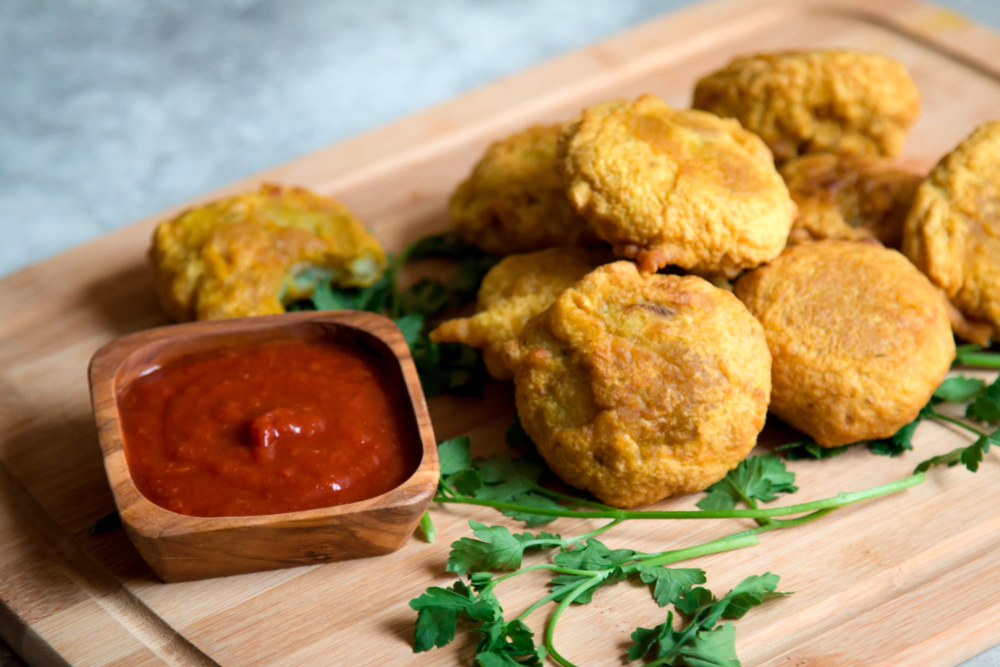
Image courtesy of My Moroccan Food
Makouda (المعـقـودة)
A visit to Jemaa el-Fnaa square market in Marrakech is a must for any traveller – and while you’re there make sure to make the most of the Makouda on offer. These delicious bites comprise of deep-fried potato balls, which have been seasoned with a spicy harissa sauce. These are most commonly dipped in a chilli sauce to blend together the perfect combination of spice and sweetness. Comfort food at its best.
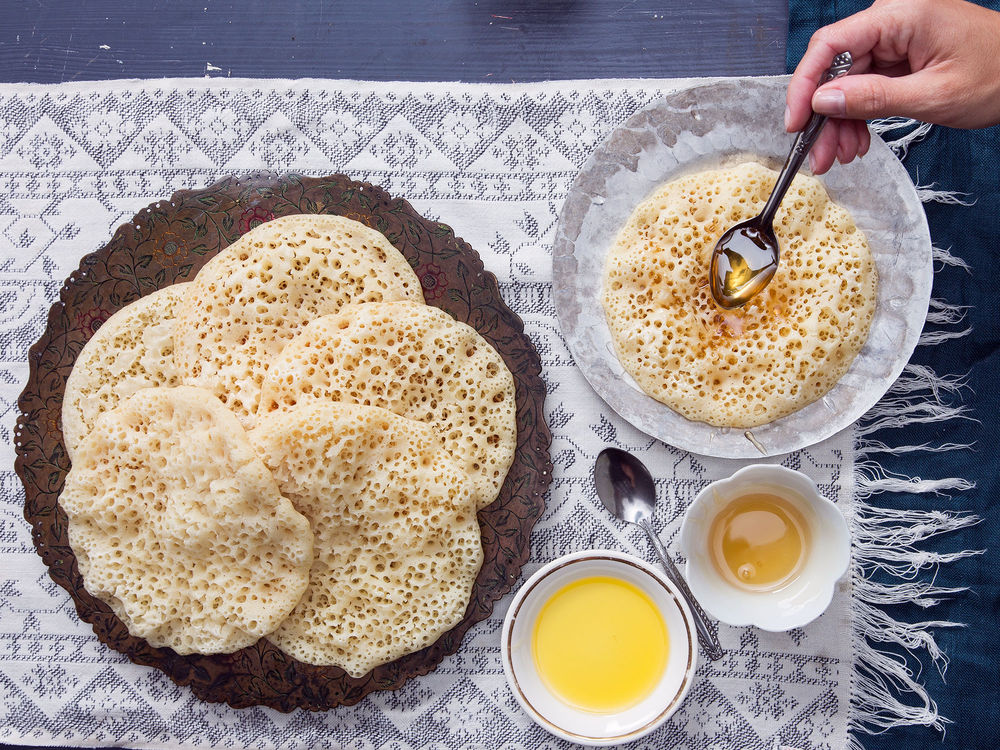
Image courtesy of Saveur
Baghrir (بـغـريـر)
A common dish you would find throughout Marrakech is the baghrir, also know as the 1000 holes crepes. These spongy and fairly thick crepes are made with semolina flour, and when cooked correctly, will result in the many minuscule holes. This dish is usually served with honey and butter, but really can be served as you please. Although commonly had for breakfast, this dish is also eaten for Iftar, being the breaking of the fasting period during the holy month of Ramadhan.

Image courtesy of taste.com.au
B’stilla (بسطيلة)
This pie stands out as one of the more interesting treats worth tucking into in Morocco – with a conglomeration of different spices and flavours playing a part here. This pastry is served mostly during Eid, weddings and parties. B’stilla is a savoury option which sees paper-thin layers of pastry contain pigeon meat, almonds and eggs – all spiced with saffron, cinnamon and fresh coriander. While this explosion of ingredients might not sound like haute cuisine, in reality it’s one of the most popular meals amongst the locals for the festivities.

Image courtesy of samia.fr
R’fissa (رفيسة)
A dish that is more commonly feasted upon is the R’fissa. This tharid dish is made from chicken and lentils, served on msemmen, buttery fried dough strips. This dish is primarily seasoned with halba, also known as fenugreek, and the North African spice known as ras-el hanout. The word hanout means shop, and in this context, meaning the “top of the shop”, signifying the best blend of spices. Do try this dish if you want a taste of what the locals have commonly.

Image courtesy of moroccolover.tumblr.com
Kaab el Ghazal (كعب الغزال) / Gazelle Horns
Kaab el Ghazal, also know as Gazelle Horns, can be a savoury pastry offering to a sweet one; are fantastic desserts which can be picked up anywhere from street markets to restaurants. These crescent-shaped delights are filled with almonds and spiced with both cinnamon and orange flower water. The unique combination of flavours really helps the dish to stand out, with the title coming from the similarity the pastries share with the antlers of the breed of antelope they’re named after.
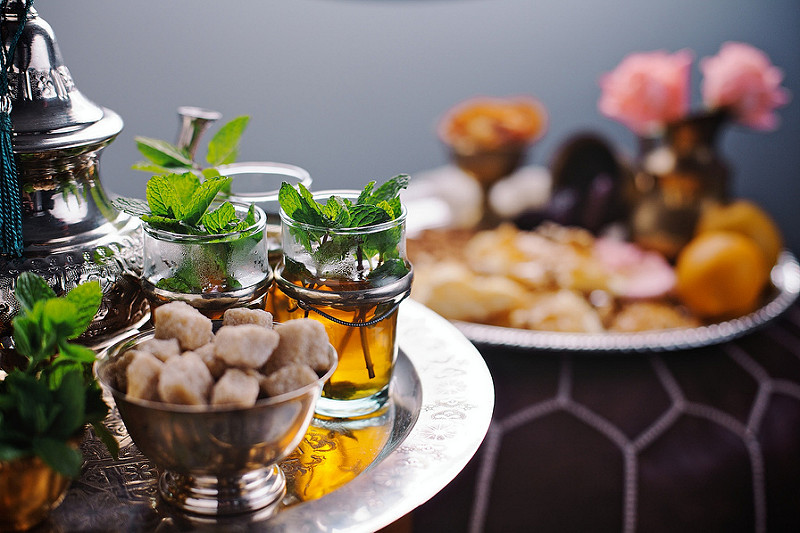
Image courtesy of Style Me Foods
Moroccan Mint Tea (التاي)
One cannot escape Morocco without having a taste of its world known Moroccan mint tea. This tea is prepared using green tea leaves, and after boiling, is infused with spearmint, giving it a nice refreshing zesty taste. This teas is usually taken with sugar, enhancing the taste of the mint, although completely optional. This tea is central to Maghreb culture, and is consumed throughout the day.
When you’re next in Morocco, why not give one of these delicious recipes a try? We know you won’t be disappointed if you do.